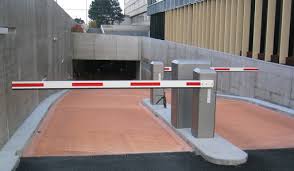Introduction:
Have you ever wondered about those sturdy yet sleek barriers that rise and fall at toll booths, parking lots, and gated entrances? Boom barriers, with their simple yet effective design, play a crucial role in regulating access and ensuring security in various environments. In this article, we’ll unravel the inner workings of boom barriers, shedding light on the mechanisms that make them function seamlessly.
Understanding the Mechanics:
At first glance, a boom barrier might seem like a straightforward device. However, its operation involves a combination of mechanical, electrical, and sometimes hydraulic components working in harmony. Let’s break down the key elements:
1. Barrier Arm:
— The most visible part of a boom barrier is the horizontal arm or bar that extends across the entry or exit point.
— This barrier arm can vary in length, depending on the width of the access point it needs to cover.
— Barrier arms are typically constructed from durable materials such as aluminum or steel to withstand repeated use and weather conditions.
2. Control Mechanism:
— The control mechanism is the brain behind the operation of the boom barrier.
— In manual boom barriers, the control mechanism is usually a lever or crank that allows a security guard to raise or lower the barrier manually.
— Automatic boom barriers employ electronic control systems, which can include sensors, actuators, and controllers to automate the process.
3. Sensors and Actuators:
— Automatic boom barriers are equipped with sensors to detect approaching vehicles or individuals.
— These sensors can include infrared sensors, loop detectors embedded in the ground, or cameras for license plate recognition.
— Upon detecting an authorized vehicle or valid access credential, the control system activates the actuator to raise the barrier.
4. Actuator:
— The actuator is the motorized component responsible for raising and lowering the barrier arm.
— It converts electrical energy into mechanical motion to move the barrier.
— Depending on the design, actuators can be electrically powered or hydraulically driven.
How Does It Work in Action?
Now that we understand the components, let’s walk through the sequence of events that occur when a vehicle approaches a boom barrier:
1. Vehicle Detection:
— As a vehicle approaches the barrier, the sensors detect its presence and relay this information to the control system.
2. Authorization Check:
— The control system verifies whether the vehicle has the necessary authorization to pass through.
— This authorization can be based on factors such as a valid access card, RFID tag, or license plate recognition.
3. Barrier Activation:
— If the vehicle is authorized, the control system activates the actuator to raise the barrier arm, allowing the vehicle to pass.
— In the case of manual operation, a security guard may raise the barrier upon confirming the vehicle’s authorization.
4. Passage and Closure:
— Once the vehicle has passed through, the barrier arm automatically lowers back into its closed position, preventing unauthorized access.
Conclusion:
Boom barriers exemplify the marriage of simplicity and sophistication in access control technology. By combining robust construction with intelligent control systems, they provide reliable solutions for managing vehicular access and enhancing security. Understanding the mechanics behind boom barriers not only deepens our appreciation for their functionality but also highlights their importance in safeguarding various premises and facilitating smooth traffic flow.






Comments